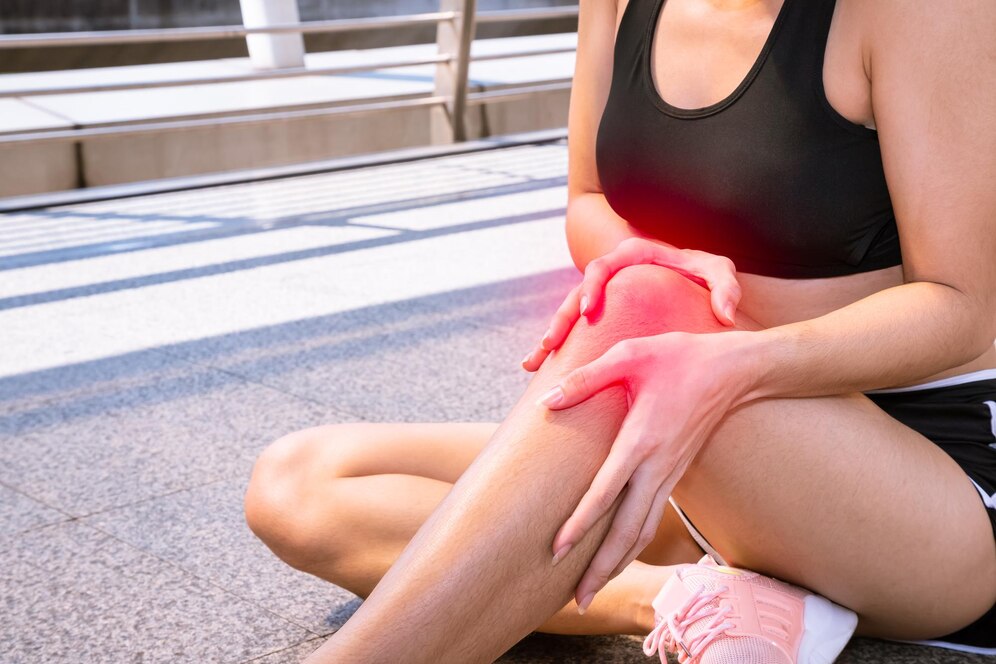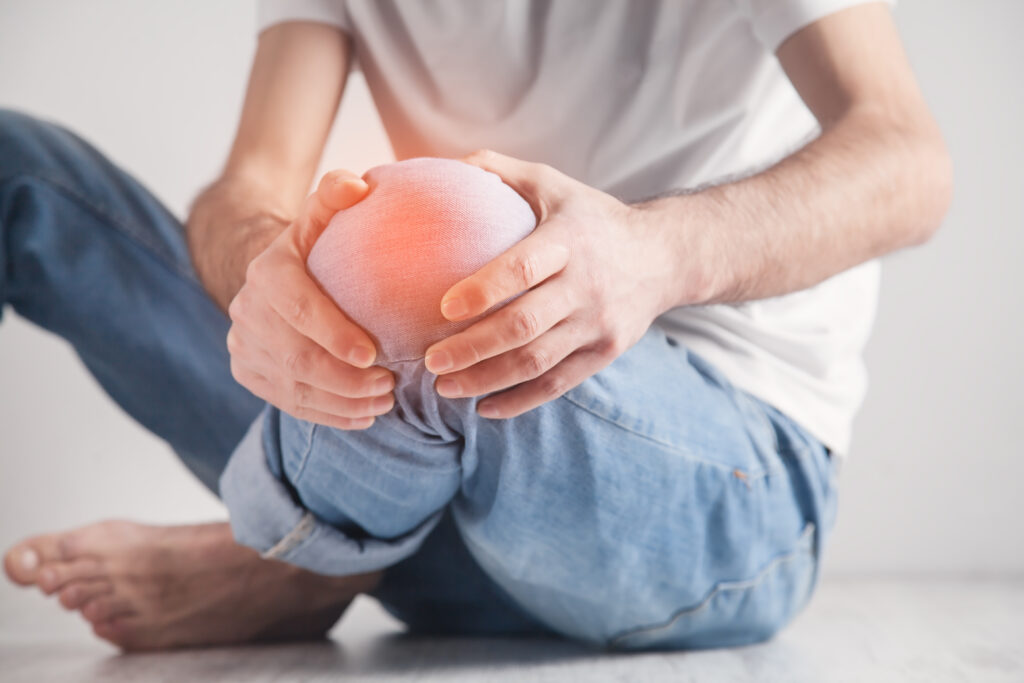If you've recently dealt with a sports injury in Calhoun, you might be wondering about the best recovery options available to you. From physical therapy and chiropractic care to nutritional support and alternative healing methods, there's a range of approaches to take into account. Each option plays a unique role in your recovery process, and understanding how they work together can be essential. So, what are the most effective strategies to guarantee you bounce back stronger? Let's explore the various recovery avenues that could make a significant difference in your rehabilitation journey.
Physical Therapy Techniques
When you're recovering from a sports injury, physical therapy techniques can make a significant difference in your rehabilitation. These techniques are designed to restore strength, flexibility, and function, helping you get back to your favorite activities as soon as possible.
One common technique you might encounter is therapeutic exercise. Your physical therapist will guide you through specific exercises tailored to your injury, gradually increasing intensity as you progress. This approach helps rebuild strength and enhances range of motion.
Another essential technique is manual therapy. Your therapist may use their hands to apply pressure to your muscles and joints, relieving pain and improving mobility. This can be especially beneficial if you're experiencing tightness or stiffness in the affected area.
Modalities like ultrasound and electrical stimulation can also play a role in your recovery. Ultrasound uses sound waves to promote healing, while electrical stimulation helps reduce pain and swelling. These methods can enhance your overall therapy experience, allowing you to recover more quickly.
Don't forget about the importance of education. Your therapist will probably teach you about body mechanics and proper movement techniques, which can prevent re-injury in the future.
Lastly, setting realistic goals together with your therapist will keep you motivated and focused. Remember, recovery takes time, but with the right physical therapy techniques, you'll be on your way to a successful comeback.
Embrace the process, and don't hesitate to ask questions along the way!
Chiropractic Care Benefits
Many athletes find that incorporating chiropractic care into their recovery plan enhances their overall healing process. This approach helps address misalignments in your spine and joints, which can be essential for optimizing your performance and reducing pain. By visiting a chiropractor, you can experience targeted adjustments that improve your body's alignment and function, leading to faster recovery from injuries.
Chiropractic care focuses on the body's musculoskeletal system, making it particularly effective for common sports injuries like sprains, strains, and tendonitis. By restoring proper alignment, you not only alleviate pain but also enhance your range of motion and flexibility. This can be especially beneficial for athletes, as improved mobility allows you to return to your sport more quickly and with greater confidence.
Additionally, chiropractic adjustments can boost your overall performance. By making sure that your body is functioning at its best, you can experience improved strength and endurance. Regular sessions can also help prevent future injuries by addressing underlying issues before they escalate into more severe problems.
Moreover, many chiropractors incorporate other therapeutic techniques, such as soft tissue therapy and rehabilitation exercises, which can further support your recovery. This all-encompassing approach guarantees that you're not just treating the symptoms but also addressing the root causes of your injuries.
Cryotherapy Treatments
Cryotherapy treatments can be a game changer for your recovery from sports injuries.
By exposing your body to extreme cold, you can reduce inflammation and speed up healing.
Let's explore the benefits, the treatment process, and when you should consider this option.
Benefits of Cryotherapy
Utilizing cold temperatures for recovery, cryotherapy treatments offer numerous benefits for athletes dealing with sports injuries. One of the most significant advantages is reduced inflammation. When you expose your body to cold, blood vessels constrict, which helps decrease swelling and pain. This can lead to quicker recovery times, allowing you to get back to your training or competition sooner.
Cryotherapy also aids in pain relief. The cold reduces nerve activity, which can effectively numb the injured area, providing immediate comfort. This pain management aspect is particularly beneficial after intense workouts or competitions.
Additionally, cryotherapy can enhance your overall performance. By speeding up recovery, you can maintain a consistent training schedule, leading to improved strength and endurance over time. You'll also experience increased energy levels, as your body can focus on healing rather than fighting inflammation.
Finally, cryotherapy can promote better sleep quality. Many athletes report feeling more relaxed and rejuvenated after sessions, which is essential for recovery.
Treatment Process Explained
Understanding the treatment process for cryotherapy can help you maximize its benefits for recovery. When you arrive for a cryotherapy session, you'll typically start by changing into protective gear, such as gloves and socks, to shield your extremities from extreme cold.
The treatment room is usually cooled and may contain a cryo chamber or localized cryotherapy device. Once you're ready, you'll enter the cryo chamber or position the device on the targeted area.
During whole-body cryotherapy, you'll stay inside the chamber for about two to three minutes, while localized treatments may last around ten minutes. The temperature will drop considerably, often between -110°F and -240°F, triggering your body's natural healing responses.
You might feel an intense cold sensation, but this discomfort is generally brief. After the session, you'll need to gradually warm up, so dress warmly and hydrate.
It's important to allow some time before engaging in strenuous activity afterward. Consistency is key; aim for multiple sessions per week to promote ideal recovery and reduce inflammation.
Ideal Recovery Situations
Many athletes find that certain situations are ideal for incorporating cryotherapy into their recovery routines.
If you've just finished an intense workout or competition, your muscles may feel sore and fatigued. This is the perfect time to contemplate cryotherapy. The cold exposure reduces inflammation, speeds up muscle recovery, and alleviates pain, making it a valuable tool right after exertion.
Another ideal situation is when you're dealing with a specific injury. Cryotherapy can help manage swelling and pain from acute injuries like sprains or strains. Using it shortly after an injury occurs can greatly aid in the healing process.
Post-rehabilitation is another opportune moment to integrate cryotherapy. Once you've completed initial treatments and physical therapy, it can help maintain your recovery progress and enhance your overall performance.
Lastly, if you're preparing for a big event or competition, using cryotherapy can boost your energy and readiness. The revitalizing effects can help you feel more prepared physically and mentally, giving you that extra edge.
In these scenarios, cryotherapy can become an essential component of your recovery strategy, ensuring you bounce back stronger and more resilient.
Acupuncture for Recovery
Acupuncture can be a powerful tool for your recovery from sports injuries, offering numerous benefits like pain relief and improved healing.
Understanding the treatment process is essential to maximizing its effects.
Let's explore how acupuncture can support your journey back to peak performance.
Benefits of Acupuncture
When it comes to recovering from sports injuries, acupuncture offers a unique approach that can enhance your healing process. This ancient practice targets specific points in your body, promoting blood flow and reducing inflammation. As a result, you may experience faster recovery times and improved mobility.
One of the key benefits of acupuncture is its ability to alleviate pain. By stimulating the release of endorphins, it helps you manage discomfort without relying solely on medication. You might notice that your pain levels decrease, allowing you to return to your training routine more quickly.
Additionally, acupuncture can help reduce stress and anxiety, which often accompany injuries. By promoting relaxation, it creates an environment conducive to healing. This mental aspect is just as important as the physical recovery process.
Another advantage is its versatility. Acupuncture can be tailored to address specific injuries or conditions, making it a personalized treatment option. Whether you're dealing with a sprain, strain, or chronic pain, acupuncture can be an effective part of your recovery plan.
Incorporating acupuncture into your recovery routine may lead to a more holistic healing experience, helping you get back to your favorite activities sooner.
Treatment Process Overview
The treatment process for acupuncture in recovery typically involves several key steps designed to maximize its benefits.
First, you'll start with a consultation where you'll discuss your specific injury, medical history, and recovery goals. This helps the acupuncturist tailor the treatment to your needs.
Next, the acupuncturist will assess your condition through physical examination and possibly pulse and tongue diagnosis. This step guarantees they understand the underlying issues affecting your recovery.
After that, you'll receive acupuncture sessions, where thin needles are inserted into specific points on your body. These needles stimulate energy flow, helping to reduce pain and promote healing.
Typically, sessions last around 30 to 60 minutes, and the number of treatments can vary based on your injury and recovery progress. You'll likely notice improvements after a few sessions, but it's crucial to communicate any changes or concerns with your acupuncturist.
In addition to acupuncture, your recovery may also include recommendations for physical therapy, exercises, or dietary adjustments to support your healing process.
Following this thorough approach can enhance your recovery and get you back to your sport more quickly.
Rest and Rehabilitation
Rest and rehabilitation are essential steps in your recovery from sports injuries, often making the difference between a quick return to the game and prolonged downtime. When you sustain an injury, your first instinct might be to push through the pain, but that can lead to further complications. Instead, prioritize rest. Give your body the time it needs to heal. This means avoiding activities that exacerbate the injury, which could prolong your recovery.
Once you've allowed your body some time to rest, rehabilitation becomes vital. A structured rehabilitation program tailored to your specific injury can help strengthen the affected area and restore your range of motion. This often includes physical therapy exercises designed to target the muscles and joints around the injured site. By engaging in these exercises, you'll not only regain strength but also enhance your overall stability, reducing the chance of reinjury.
It's important to listen to your body during this process. If an activity causes pain, it's a signal to scale back. Communicating with your healthcare provider or physical therapist guarantees you're on the right track. They can adjust your rehabilitation program based on your progress, helping you gradually return to your sport.
Massage Therapy Options
Exploring massage therapy options can greatly enhance your recovery from sports injuries. When you experience a sports-related injury, your body often goes through a lot of stress and tension. Massage therapy can help alleviate that tension, promote circulation, and accelerate healing.
One effective option is deep tissue massage. This technique targets deeper layers of muscle and connective tissue, making it ideal for chronic pain and muscle tightness. If you've got knots or tight areas, this type of massage can break down adhesions and improve flexibility.
Another option is sports massage, specifically designed for athletes. It focuses on areas of the body that are overused and strained from repetitive and intense physical activity. Sports massage can be beneficial before or after an event, helping to prevent injuries and reduce recovery time.
You might also consider trigger point therapy, which focuses on specific tight areas within the muscle, known as trigger points. By applying pressure to these points, you can relieve pain in other areas of the body and improve overall function.
Lastly, consider incorporating myofascial release into your recovery routine. This technique works on the fascia, the connective tissue surrounding muscles, helping to release restrictions and improve mobility.
No matter which option you choose, make sure to consult a qualified massage therapist who understands sports injuries. They can tailor the treatment to your specific needs, helping you get back to your sport faster and with less pain.
Strength Training Exercises
When recovering from a sports injury, strength training exercises can play an essential role in regaining functionality and preventing future injuries. These exercises help rebuild muscle strength, improve stability, and enhance overall performance. It's vital to approach strength training carefully to avoid re-injury, so start by consulting with a healthcare professional or a physical therapist.
Begin with low-impact exercises that target the affected area. Resistance bands, bodyweight exercises, and light weights are excellent starting points. For instance, if you've injured your knee, consider performing leg lifts or wall sits to build strength gradually. Focus on proper form and controlled movements, and don't rush the recovery process.
As you progress, incorporate compound movements that engage multiple muscle groups. Exercises like squats, lunges, and push-ups can enhance your overall strength and coordination. Remember to balance your workouts by including both upper and lower body exercises, ensuring you maintain muscle symmetry.
Aim for consistency, but also listen to your body. If something doesn't feel right, stop and reassess. Recovery isn't just about pushing through discomfort; it's about finding the right balance between challenge and safety.
Lastly, as you build strength, consider adding functional exercises that mimic the movements of your sport. This won't only aid in your recovery but also help you perform better once you're back to playing.
With dedication and smart training, you'll be on your way to returning stronger than ever.
Nutritional Support
Nutritional support is crucial for recovery from sports injuries, as the right diet can greatly impact healing and overall strength. When you're recovering, your body needs specific nutrients to repair tissues, reduce inflammation, and regain strength.
Focus on a balanced diet rich in protein, healthy fats, and carbohydrates to aid your recovery.
Protein is essential for tissue repair. Incorporate lean meats, fish, eggs, dairy, legumes, and nuts into your meals. Aim for at least 1.2 to 2.0 grams of protein per kilogram of body weight, depending on the severity of your injury and activity level.
Healthy fats, such as avocados, olive oil, and fatty fish, help reduce inflammation and promote healing. Omega-3 fatty acids, in particular, found in salmon and walnuts, are known for their anti-inflammatory properties.
Don't overlook carbohydrates, which provide the energy you need for daily activities and recovery. Opt for whole grains, fruits, and vegetables that are high in fiber, vitamins, and minerals. These foods support your immune system and overall health during recovery.
Hydration is another key component. Drink plenty of water throughout the day to keep your body functioning effectively. Dehydration can slow down healing, so make it a priority to stay hydrated.
Incorporating these nutritional strategies into your recovery plan can greatly enhance your healing process and get you back to your sport stronger than before.
Alternative Healing Methods
While a balanced diet provides a solid foundation for recovery, many athletes also seek out alternative healing methods to complement their rehabilitation process. These methods often focus on holistic approaches, addressing both physical and mental aspects of healing.
You might find practices such as acupuncture beneficial. This ancient technique involves inserting thin needles into specific points on the body, promoting natural pain relief and reducing inflammation.
Another popular option is chiropractic care. Chiropractors work to align your spine and joints, improving mobility and alleviating discomfort. If you've been dealing with persistent pain, a chiropractor might help restore your body's natural function.
Massage therapy is also a great way to enhance recovery. It promotes circulation and relieves muscle tension, helping you recover faster after injuries. You might enjoy deep tissue or sports massage, specifically tailored to address the unique needs of athletes.
Additionally, consider exploring yoga or mindfulness meditation. These practices can improve flexibility and strength while helping you manage stress and anxiety, which often accompany injuries. They encourage body awareness, aiding in your overall recovery.
Lastly, herbal remedies and supplements, like turmeric or omega-3 fatty acids, can support your healing process. Just be sure to consult with a healthcare professional before adding anything new to your regimen.
Conclusion
In Calhoun, you've got a variety of recovery options for sports injuries at your fingertips. Whether you choose physical therapy, chiropractic care, or massage therapy, each method plays an essential role in your healing journey. Don't forget about the benefits of cryotherapy and proper nutrition, too—they can greatly enhance your recovery. By combining these approaches, you can rebuild strength, improve mobility, and reduce the risk of re-injury, getting you back in the game faster than ever.



